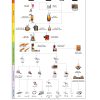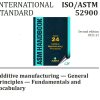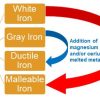When comparing steel standards from different national and international standard development organizations, there is no such thing as equivalent steel standards. At best, one may be able to group comparable steel standards together based on some defined set of rules.
Comparing steel standards is not an exact science and cannot be made into a mathematical equation where two sides of an equation are equal to one another, since there will always be differences between standards. These differences may be significant to one user, but not significant to another user.
Not all steels have comparative counterparts. Knowing that a steel is non-comparable can be just as important as knowing that there are comparative steels. Otherwise, valuable time could be wasted searching for something that does not exist.
When comparing two or more steel standards, the following questions can be asked:
Should mechanical properties or chemical composition be the main criteria? If mechanical properties are compared, which property should be the first criteria for comparison, that is, yield strength, tensile strength, elongation, impact strength, hardness, etc.? Once having selected a primary criterion, say tensile strength, should there be a secondary criterion for ranking the comparative steels within this group, for example, yield strength, hardness, etc.? When mechanical properties or chemical compositions vary with section thickness for a given steel grade, which section thickness data should be selected as the criteria for comparison? When two steels have the same minimum tensile strength values, but have different yield strength values, are they no longer similar?
Should comparisons be based on the data’s minimum values, maximum values, or average values of their min/max ranges? Should alloy steels and stainless steels be compared on their mechanical properties when they are generally selected for use based on their alloying elements’ abilities to provide satisfactory service in their intended applications?
Is it reasonable to compare steels based only on their chemical compositions, regardless of their product form? That is, should forging steels be compared to steel plates or tubes because they have similar chemical compositions and is this type of comparative data useful in engineering practice?
Ref. ASTM handbook of comparative world steel standards






